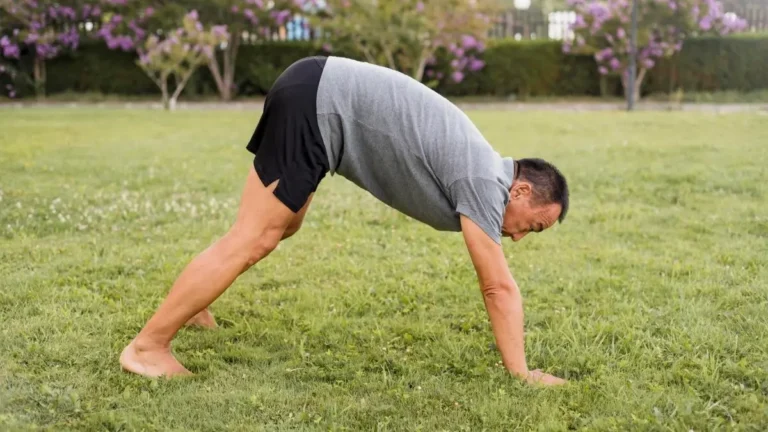The Shocking Truth About Walking 10,000 Steps a Day (Is It a Myth?)

You’ve likely heard the buzz: walk 10,000 steps a day, and you’ll live a longer, healthier life. But is it really that simple? This widely-accepted health advice has been ingrained in our minds, often parroted by fitness trackers, gym instructors, and even well-meaning friends. Yet, could this daily step goal be nothing more than a marketing gimmick? In this article, we break down the truth behind the 10,000-step myth.
Despite its widespread popularity, the 10,000-step benchmark may not be as effective—or necessary—as we’ve been led to believe. Experts argue that the origins of this number are rooted in a marketing campaign, not solid scientific research. While walking certainly offers health benefits, the number of steps you need may be lower—or higher—depending on your age, health status, and fitness goals.
Stick with us as we explore whether walking 10,000 steps is truly the golden ticket to better health or just another health fad. We’ll uncover the facts, bust the myths, and offer you a clearer understanding of how many steps are really worth counting for your personal well-being.
#1. Health Benefits Myths
Walking 10,000 steps a day is often touted as the golden standard for good health. But is it? Research shows that while walking is undoubtedly beneficial, the magic number of 10,000 steps doesn’t hold up as a universal rule.
Some studies suggest that as few as 5,000 steps may improve cardiovascular health, and benefits increase with any extra steps beyond that.
Tips:
- Focus on increasing your steps gradually rather than hitting a specific number.
- Include variety in your walking routines, such as brisk walks or incline paths.
- Consistency matters more than perfection in step goals.
#2. Calories Burned Reality
While walking 10,000 steps can burn calories, it may not be enough for significant weight loss. On average, walking that distance burns around 300-500 calories, depending on factors like pace and body weight.

For substantial weight loss, this may need to be paired with proper nutrition and additional physical activities, like strength training, to create a caloric deficit.
Tips:
- Pair walking with strength training for more efficient calorie burning.
- Watch your diet to ensure you’re creating a sustainable caloric deficit.
- Track your activity using apps or fitness trackers to stay on course.
#3. Impact on Joints
For many, walking 10,000 steps a day can be a strain, especially for those with joint issues like arthritis.
While walking is low-impact compared to running, the repetitive motion can still cause discomfort for individuals with preexisting joint pain or conditions. The key is listening to your body and not overexerting yourself on tough days.
Tips:
- Opt for cushioned shoes to reduce joint strain.
- Warm up and cool down before and after long walks.
- Alternate walking with other low-impact activities like swimming or cycling.
#4. Mental Health Effects
Walking does wonders for your mental well-being. The repetitive rhythm of walking releases endorphins, helping reduce stress and boost mood. Regular walkers report improved cognitive function and lower levels of anxiety.

However, the intensity and duration of your walks can also influence these benefits, with brisk walks offering more mental clarity.
Tips:
- Walk in nature to enhance mental relaxation.
- Try mindful walking, focusing on your breathing and surroundings.
- Use walks as a time to de-stress or reflect on your day.
#5. The 10,000 Steps Origin
The 10,000-step rule originated in Japan in the 1960s as part of a marketing campaign for a pedometer. Dr. Yoshiro Hatano, a Japanese professor, later promoted it in studies,

but he wasn’t suggesting it as a one-size-fits-all goal. Instead, it was a simple, memorable target to encourage more activity. It’s become a fitness trend, but isn’t grounded in extensive scientific research.
Tips:
- Choose a step goal based on your personal fitness level.
- Remember, any movement is beneficial, even if it’s less than 10,000 steps.
- Use the 10,000-step goal as motivation, not a strict requirement.
#6. Time Commitment Realities
Walking 10,000 steps a day can take up a significant amount of time. Depending on your pace, it may take anywhere from 1.5 to 2 hours to reach this goal.

For busy people, this time commitment can be daunting. While the idea of hitting a step target sounds motivating, fitting it into a packed schedule might not always be practical. Prioritizing movement throughout the day can be a better strategy.
Tips:
- Break up your walking into shorter sessions, like 10-minute walks.
- Consider incorporating steps into daily tasks, like walking during meetings or errands.
- Use a fitness tracker to monitor your progress throughout the day.
#7. Does Intensity Matter?
The intensity of your walk can be just as important as the number of steps you take. Moderate to brisk walking can provide more cardiovascular benefits in less time.

Pushing yourself to walk faster or uphill can burn more calories and improve heart health. So, focusing on increasing your pace may yield greater results than simply reaching 10,000 steps.
Tips:
- Gradually increase your pace to challenge your cardiovascular system.
- Include intervals in your walk, alternating between brisk and slow walking.
- Pay attention to your heart rate; aim for a moderate intensity during your walks.
#8. Alternative Exercise Solutions
Walking isn’t the only way to stay fit. Other activities, like cycling, swimming, or even strength training, can provide equal or greater benefits in less time.

These exercises engage different muscle groups and may be gentler on the joints. Exploring alternatives can also prevent boredom and provide a more balanced fitness routine.
Tips:
- Try cycling for a low-impact alternative to walking that still boosts cardio.
- Incorporate strength training to build muscle and increase metabolism.
- Experiment with yoga or Pilates to improve flexibility and strength.
#9. Alternative Exercise Solutions
While walking 10,000 steps offers cardiovascular benefits, other exercises might offer more comprehensive health improvements. Strength training, for example, helps build muscle mass, which can prevent age-related muscle loss.
Cardio workouts, like running or swimming, can improve endurance and heart health. Comparing these options can help you find what best suits your overall fitness goals.
Tips:
- Mix walking with strength training to build muscle and improve metabolism.
- Consider high-intensity interval training (HIIT) for quick and efficient results.
- Balance your workouts for full-body fitness and overall health improvement.
General Tips:
Gradually increase your daily step count to avoid burnout.
Mix up your walking pace for better cardiovascular benefits.
Break up your steps into smaller sessions to fit your schedule.
Use a fitness tracker to stay on top of your progress.
Consider walking uphill or on uneven terrain for more challenge.
Pair walking with strength training to maximize health benefits.
Stay consistent with your steps, but don’t obsess over the 10,000 mark.
Focus on the quality of your movement rather than the quantity.
Listen to your body and rest if you feel joint discomfort or pain.
Final Thought:
The 10,000-step goal has been glorified for years, but is it really the fitness miracle we’ve been led to believe? The truth might surprise you—walking just 5,000 steps could offer similar benefits, and intensity often matters more than quantity.
If your busy schedule makes 10,000 steps seem out of reach, don’t worry. It’s not about hitting a magic number, but about consistent, mindful movement. So, forget the pressure and focus on what works best for your body. Your health journey doesn’t need to be measured in steps, but in progress.






